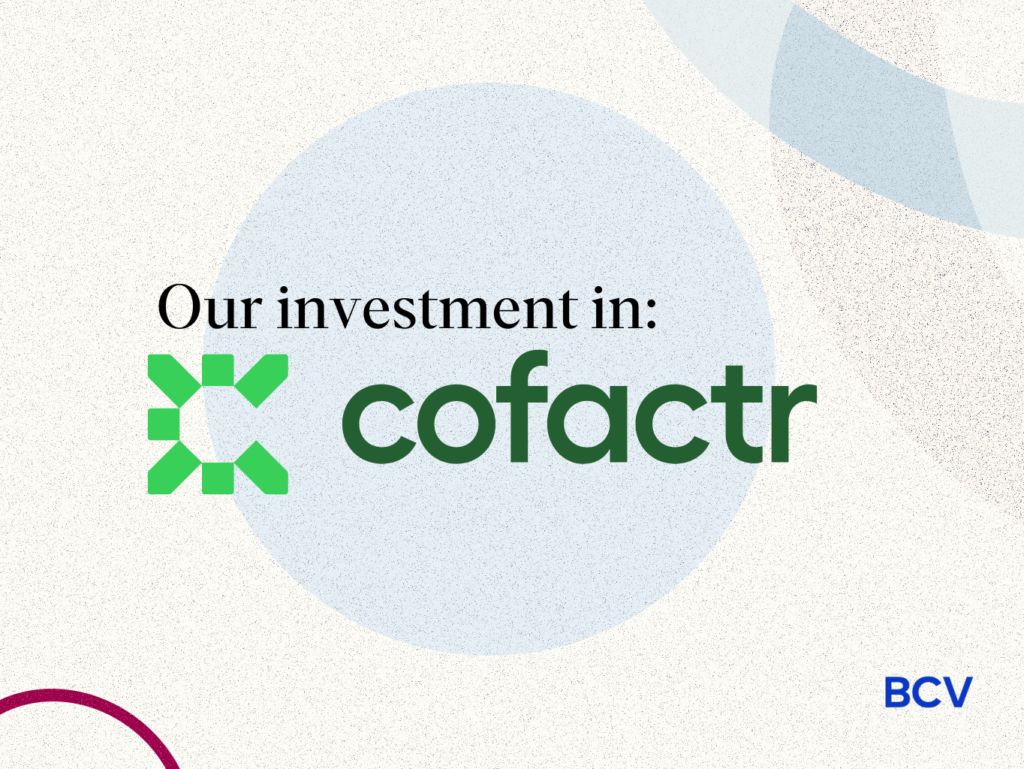In our Making Markets series, learn from exceptional entrepreneurs about their magic moments in company building and important lessons for shaping the industries that matter today.
ShipBob is one of the world’s fastest growing technology companies, providing a cloud-based logistics platform and global fulfilment network to over 5000 small and medium-sized retailers around the globe. With ShipBob, SMB ecommerce companies can easily and affordably offload the entire fulfillment process — from warehousing their products, to packing, shipping, and tracking.
We recently sat down with founder Dhruv Saxena to ask him how he and co-founder Divey Gulati decided on their go-to-market strategy, and what other entrepreneurs can learn from their early company-building experience.
What comes first: your product or a sales strategy?
When we started ShipBob, we only thought about one thing: whether we could create a product that customers would be willing to pay for. There is a famous Tweet by one of YC partners that goes something like this: first-time founders obsess over product, and second-time founders obsess over distribution.
Divey and I are both engineers, and we had started several small companies before ShipBob that didn’t really go anywhere, because we fell into the trap of being obsessed with our product. We would dream up an idea, build it, and then hope customers would come to the product and pay for it. It doesn’t really work that way…unless you’re Steve Jobs, and then you can build whatever you want and people will just buy it!
Our early experiences made us realize that to build a truly successful company, we had to validate the market and our distribution strategy first, and then build the product.
Over 5000 small businesses use ShipBob for their entire end-to-end shipping process, so it clearly resonates with a huge market. What is the best way to define product-market fit?
The only thing that matters is building a product that solves a real problem for real people in a way that will motivate them to purchase it.
The problem we wanted to solve was shipping for small online businesses. My co-founder Divey Gulati and I ran an ecommerce business part-time, outside of our real jobs, and we just had this huge headache to store our product, buy all the shipping materials, and wait in line at the post office to send the packages. In wanting to fix this problem for ourselves, we began to think about whether we could also fix it for other SMBs selling products online.
To find out, we stood outside the post office many, many times over six months and just started talking to people carrying lots of packages. We asked them if they ran ecommerce businesses and, if so, would they use a service that would handle all the shipping for them, and how much they would pay for that service. We compiled all their responses to come up with our go-to-market strategy.
And then, after we launched ShipBob, we went back to the post office almost every day for six more months, asking people to critique our early application, which we showed them on our laptops. It was sometimes awkward to accost strangers at the post office, but that is how we came up with a true product-market fit.
ShipBob started out by owning warehouses and then, after a few years, evolved to a franchise model where third-party warehouse operators equip their facilities with your software. Why did you shift your original go-to-market strategy?
For the first three or four years, we owned and operated our own four warehouses and that full-stack model was a great decision; we learned so much about how warehouses work. But as the company expanded, we did an assessment of our capital structure and realized continuing to purchase and staff up warehouses would constrain our growth.
So we experimented with a franchise model that ended up working incredibly well and is almost infinitely scalable. It worked because we already knew how to run warehouses, and we could help franchise owners turn their existing properties into ecommerce shipping hubs. We today operate 24 warehouses in five countries through our franchise model. We bring our software and expertise on working with SMBs to them, and they become certified ShipBob fulfillment centers.
As a member of our board, Ajay Agarwal at BCV was integral in helping us make this decision based on his experience as both an investor and an operator; he had a strong vision that we could become a much larger company serving far more retailers through a franchise model.
Some founders think if they create a killer go-to-market strategy, they need to be wedded to it forever. But your company evolves over time and an outdated go-to-market strategy can hold back your growth. Don’t be afraid to continually review your product-market fit and finetune how you sell and price your product.
How did you decide on a pricing strategy, and what can other entrepreneurs learn from your experience?
We asked potential customers how they’d like to pay for our product and the overwhelming response was to pay a per-item shipping fee. A subscription model didn’t make sense for many of our customers since they sometimes ship a lot of products and sometimes ship only a few per month, depending on demand, seasonality, manufacturing constraints, etc.
For founders trying to figure out pricing, which is one of the biggest ongoing challenges, you should think about the economic unit that is the most valuable to your customer.
For example, the economic unit most valuable to Uber users is a ride, so Uber prices its services per ride. For ShipBob customers, it’s shipments, so we price our product per-shipment. It’s a bit more complicated for a SaaS company, but you can lean toward unit-based pricing if the value of your product increases exponentially as more users join, such as Slack, and more of a subscription-based model if your product is used only by one distinct team within a company, such as marketing or engineering.
The bottom line is, ask your customers which pricing model aligns with the user-value derived from your product, and then explore ways to make that work with your long-term revenue goals.
ShipBob took on the huge challenge of disrupting the multi-trillion-dollar logistics industry. As a founder, how do you decide which sector to tackle?
The real question to ask yourself is not which industry is most in need of disruption, but which industry you actually love. You have to fall in love with a market first and then build a product for that market. Your core market won’t change, but your product will over time. So if you are passionate about your customers, then you will be willing to adapt and change your product over time to meet their needs.
In other words, founder-market fit comes first, and that leads to product-market fit. If you don’t have founder-market fit, you’ll give up as soon as the first big hurdle comes along. If you don’t love the industry you’re trying to work in, it’s going to be a long, tough haul to create a successful company in that sector.
Divey and I had wanted to start a business selling stuff ever since we were little kids — our families are close and we grew up in the same town. When we both left India and came to the US in 2007 to study engineering, we kept talking about starting an ecommerce business one day and we finally launched one in 2013. We automated every part of our business except shipping, and so we called a lot of third-party logistics companies, but they wouldn’t take us because we were too small.
We love ecommerce and so we started ShipBob to make life easier for all the other ecommerce entrepreneurs out there.
Since it was founded in 2014, ShipBob has raised over $330M and reached a $1B valuation. BCV first invested in the company in 2017 and recently led their $200M Series E round. Read our take here.





